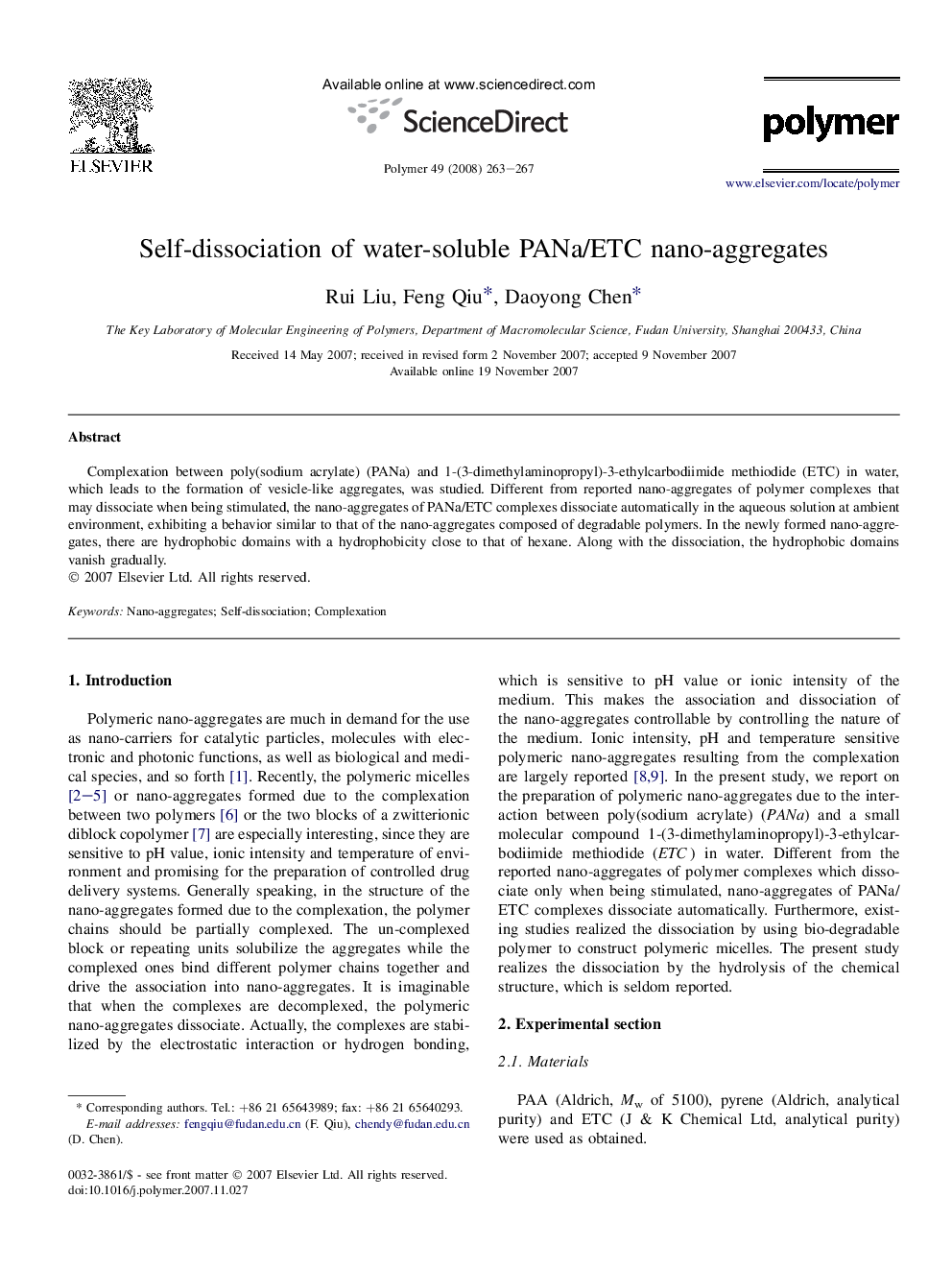| Article ID | Journal | Published Year | Pages | File Type |
|---|---|---|---|---|
| 5187585 | Polymer | 2008 | 5 Pages |
Abstract
Complexation between poly(sodium acrylate) (PANa) and 1-(3-dimethylaminopropyl)-3-ethylcarbodiimide methiodide (ETC) in water, which leads to the formation of vesicle-like aggregates, was studied. Different from reported nano-aggregates of polymer complexes that may dissociate when being stimulated, the nano-aggregates of PANa/ETC complexes dissociate automatically in the aqueous solution at ambient environment, exhibiting a behavior similar to that of the nano-aggregates composed of degradable polymers. In the newly formed nano-aggregates, there are hydrophobic domains with a hydrophobicity close to that of hexane. Along with the dissociation, the hydrophobic domains vanish gradually.
Keywords
Related Topics
Physical Sciences and Engineering
Chemistry
Organic Chemistry
Authors
Rui Liu, Feng Qiu, Daoyong Chen,
